The journey into the profound historical role of textured hair in ancestral identity begins not with a whisper, but with the earth’s own ancient rhythms. Consider for a moment the lineage of your own strands, a living echo of generations past, each coil and curve holding tales untold. What deep-seated wisdom might reside there, beneath the surface of what we perceive today? This inquiry is not a mere academic pursuit; it stands as an invitation to reconnect with a heritage that shaped cultures, defined communities, and served as a language long before written words found their voice.
Textured hair, in its myriad forms, has always been more than an aesthetic choice. It is a crown, a map, a library — a tangible link to ancestral identity.

Roots
In the vast expanse of ancestral lands, particularly across the African continent, hair was never a mere appendage. It represented a visible testament to one’s lineage, a living chronicle of identity, social standing, and spiritual connection. The very anatomy of textured hair, with its unique elliptical cross-section and tightly coiled structure, became a biological signature, reflecting generations of adaptation and resilience within diverse environments.
This distinct morphology, quite different from the rounder, straighter fibers of other hair types, necessitated specific care practices and styling approaches that, over millennia, became deeply embedded in community rituals and personal expression. This is not just about a curl pattern; it describes a genetic heritage that has shaped human interaction with the natural world.
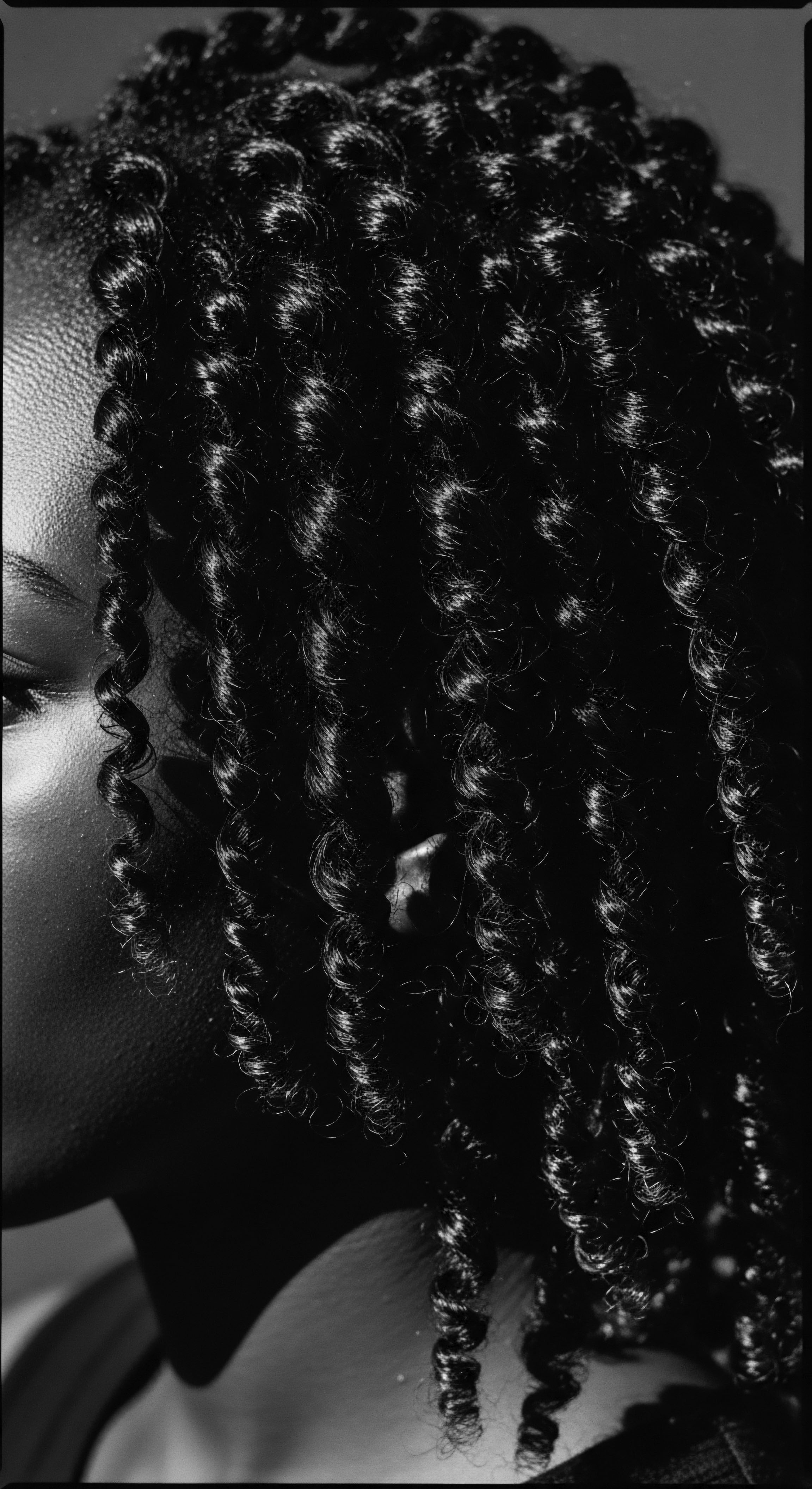
What Does Textured Hair’s Structure Tell Us About Ancient Life?
The morphology of textured hair, characterized by its tightly coiled strands and a flattened, elliptical cross-section, distinguishes it from other hair types, which often exhibit a more circular or oval shape. This structural characteristic dictates how the hair grows, how it absorbs and retains moisture, and its inherent strength and fragility. In ancestral contexts, this meant that hair care was a dynamic interplay with environmental factors. The tightly coiled nature of hair found across various African populations, for instance, offered natural protection against intense solar radiation, a functional adaptation in equatorial climates.
Simultaneously, this very structure meant a predisposition to dryness and tangling, necessitating careful regimens of moisture application and gentle handling. Ancient communities recognized this inherent biology, developing sophisticated practices to protect, nourish, and adorn their hair. They understood, intuitively perhaps, what modern science now elucidates ❉ the hair follicle’s curved path beneath the scalp gives rise to the characteristic coil, influencing everything from hydration to susceptibility to breakage.
For centuries, the vocabulary surrounding hair was woven into the fabric of daily life, extending beyond simple descriptions of texture. Terms designated not only hair type but also the social, ceremonial, or spiritual state of an individual. The Yoruba people, for example, had a rich lexicon for various hair patterns and their social meanings, recognizing hairstyles as markers of age, marital status, and even mood. This collective understanding transcended mere aesthetics; it was a communal language spoken through coils and braids.
Textured hair’s distinct biological form directed the ancestral development of care practices, weaving a profound link between inherent nature and cultural expression.

How Did Ancestral Classifications Shape Identity?
Before the imposition of external classifications, African societies possessed nuanced systems for categorizing hair, not merely by curl pattern but by the stories it told. These systems were deeply rooted in social, spiritual, and regional identity. Hair, as the most elevated part of the body, was often considered a conduit to the divine, a spiritual antennae connecting individuals to ancestors and the spirit world. Hairstyles conveyed information about a person’s tribal affiliation, marital status, age, wealth, and even their current emotional state or life stage.
For instance, specific braiding patterns might signify a woman’s readiness for marriage, or a warrior’s preparation for battle. Among the Maasai, distinct hair treatments involving red ochre and elaborate plaits denoted rites of passage for both men and women. These classifications were not rigid scientific taxonomies but rather living, cultural maps, understood by all members of a community.
The idea that hair could communicate such complex narratives without a single word is a testament to the depth of ancestral knowledge systems. Different regions and ethnic groups held unique customs:
- Yoruba (Nigeria) ❉ Hairstyles like Sùkú (a raised, basket-like braid) symbolized sophistication for young women and brides. Ìpàkó-Elédè, where hair was braided backward, indicated youth and vitality for unmarried women. The failure to maintain neat hair could even suggest illness or anti-social behavior.
- Fulani (West Africa) ❉ Known for their thin, woven braids adorned with beads, cowrie shells, and silver or gold coins, these styles often communicated wealth, familial connections, and marital status.
- Himba (Namibia) ❉ Women covered their dreadlocked strands in red ochre paste, linking them to the earth and their ancestral traditions. Dreadlocks worn down in front indicated puberty, while those tied back suggested readiness for marriage.
These examples illuminate how classifications were not just observational; they were performative, shaping and reflecting individual and collective identity within the ancestral framework. Hair served as a visual language, each style a chapter in a person’s life story and their community’s collective heritage.

Ritual
The historical journey of textured hair is profoundly marked by ritual. These were not mere acts of grooming; they were ceremonies steeped in community, spiritual connection, and the passing down of ancestral practices. From intricate braiding sessions that served as social gatherings to the application of plant-based elixirs, each touch upon the hair was a deliberate act of cultural reinforcement, shaping ancestral identity in tangible ways.
These rituals were expressions of reverence for the self and for the collective heritage. The practices varied widely, yet they consistently underscored hair as a sacred canvas for individual and communal narratives.

How Did Ancient Styling Techniques Affirm Ancestral Identity?
Ancestral styling techniques, far from being simply fashionable, were powerful affirmations of identity, social standing, and spiritual beliefs. Braiding, for instance, dates back thousands of years, with archaeological evidence found in ancient Egyptian sculptures and West African artifacts. These were not quick processes; styling could take hours, even days, often involving the communal gathering of family and friends. This shared experience strengthened social bonds and served as a pedagogical space where oral histories, traditions, and life lessons were exchanged across generations.
Consider the profound meaning woven into each strand during these sessions. Beyond aesthetics, braids served as coded messages, maps, and even storage for valuable items during the transatlantic slave trade. Enslaved Africans, stripped of many aspects of their culture, held fast to their hair traditions.
They braided escape routes into their hair or hid seeds and small valuables within their coils, a quiet, defiant act of survival and cultural preservation. This practice demonstrates a remarkable resilience, using hair as a medium for both literal and symbolic resistance against dehumanization.
| Technique Braiding (Ìrun Dídì) |
| Cultural Context / Ancestral Use Common across many African societies, denoting social status, age, marital status, tribal affiliation. In the diaspora, a tool for coded communication and cultural resistance during slavery. |
| Technique Threading (Ìrun Kíkó) |
| Cultural Context / Ancestral Use Prevalent among Yoruba people; involves wrapping hair with thread to stretch and protect strands, indicating social class or personal style. Also used for length retention. |
| Technique Locs (Dreadlocks) |
| Cultural Context / Ancestral Use Ancient origins across various African cultures, symbolizing strength, spiritual power, and a connection to higher deities or ancestors in some traditions (e.g. Akan priests). |
| Technique Bantu Knots |
| Cultural Context / Ancestral Use A protective style from the Zulu tribe of South Africa, historically symbolizing femininity and beauty. |
| Technique These techniques transcended mere appearance, serving as vital expressions of heritage, status, and survival. |
The tools themselves held significance. Beyond simple combs and picks, ancestral communities utilized a variety of instruments crafted from natural materials, each with a purpose in maintaining and adorning textured hair. These could include carved wooden combs, bone picks, or even specific thorns for parting and styling. The very act of crafting these tools connected users to their environment and local resources.
Ancestral styling was a purposeful act, weaving meaning into every strand, transforming hair into a canvas of identity and a conduit for survival.
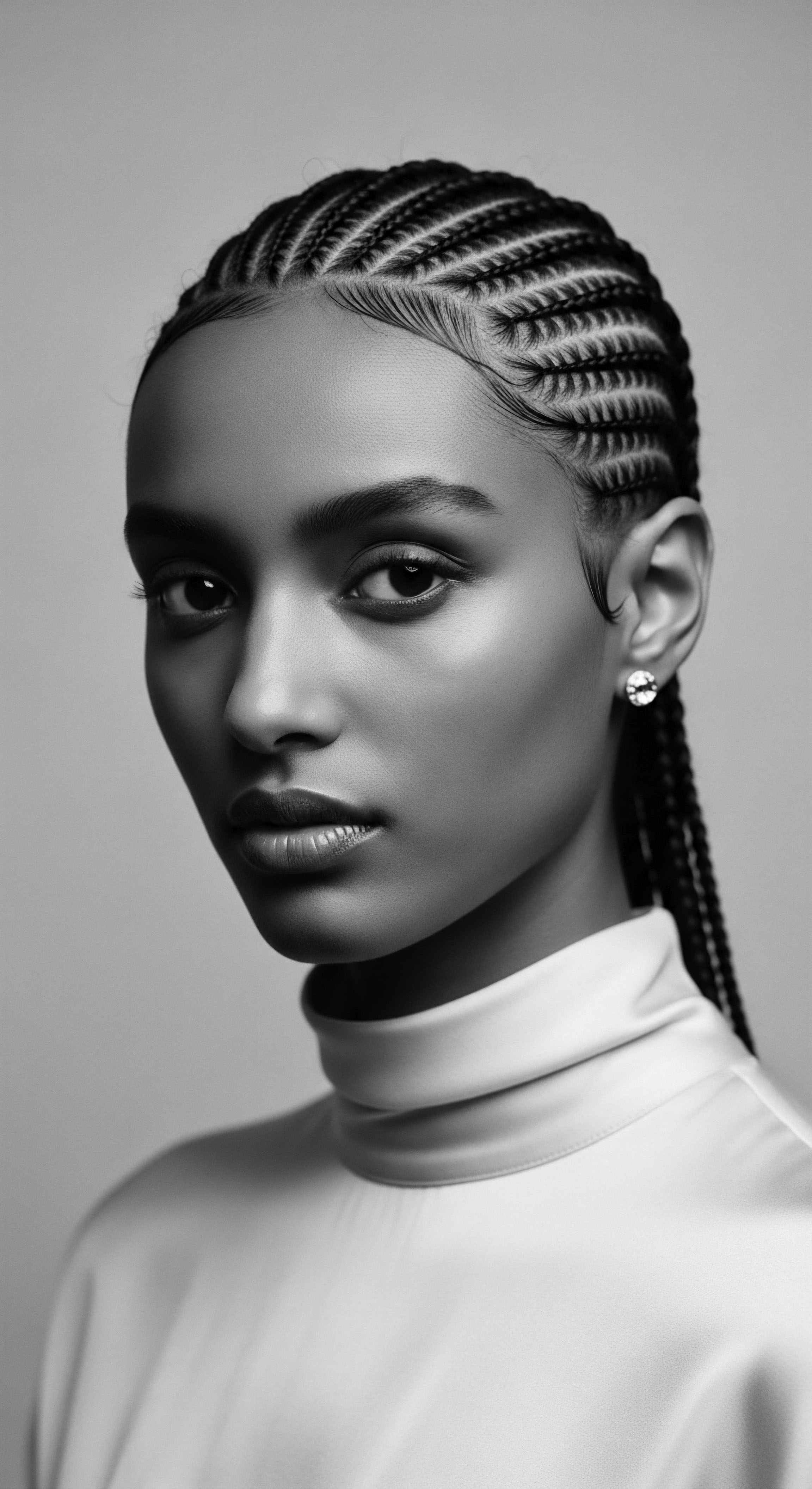
What Role Did Hair Adornments Play in Ancestral Visual Language?
Adornments for textured hair were far more than decorative elements; they were integral to the visual language that communicated identity, status, and spiritual beliefs. Cowrie shells, beads, precious metals, and natural fibers were incorporated into hairstyles, each carrying distinct meanings. For the Fulani, specific arrangements of silver or gold coins within braids could broadcast wealth or marital status. The Himba women’s use of ochre and butter to coat their hair was a direct link to their environment and a symbol of their connection to the earth and their ancestors.
In many societies, particular adornments were reserved for specific rituals, ceremonies, or life events. For instance, in some West African traditions, certain symbols (like the Adinkra symbols of the Ashanti people) were integrated into hairstyles, carrying specific proverbs or messages about wisdom or unity. This practice elevated hair to a form of living art, where each embellishment contributed to a complex statement about the wearer’s place in the world and their ancestral lineage. The act of adorning also served as a moment of reflection and intention, a silent conversation between the individual, their community, and their heritage.

Relay
The enduring presence of textured hair practices, passed across generations and continents, stands as a profound relay of ancestral wisdom and resilience. The knowledge of how to care for, style, and protect these unique strands, often under challenging circumstances, demonstrates a deep, inherited understanding of holistic well-being. This wisdom is not confined to the past; it continues to shape regimens, inform choices, and ground communities in their heritage, proving that care practices are as much about spiritual and cultural continuity as they are about physical maintenance. It is a living legacy, constantly adapting yet always echoing its origins.
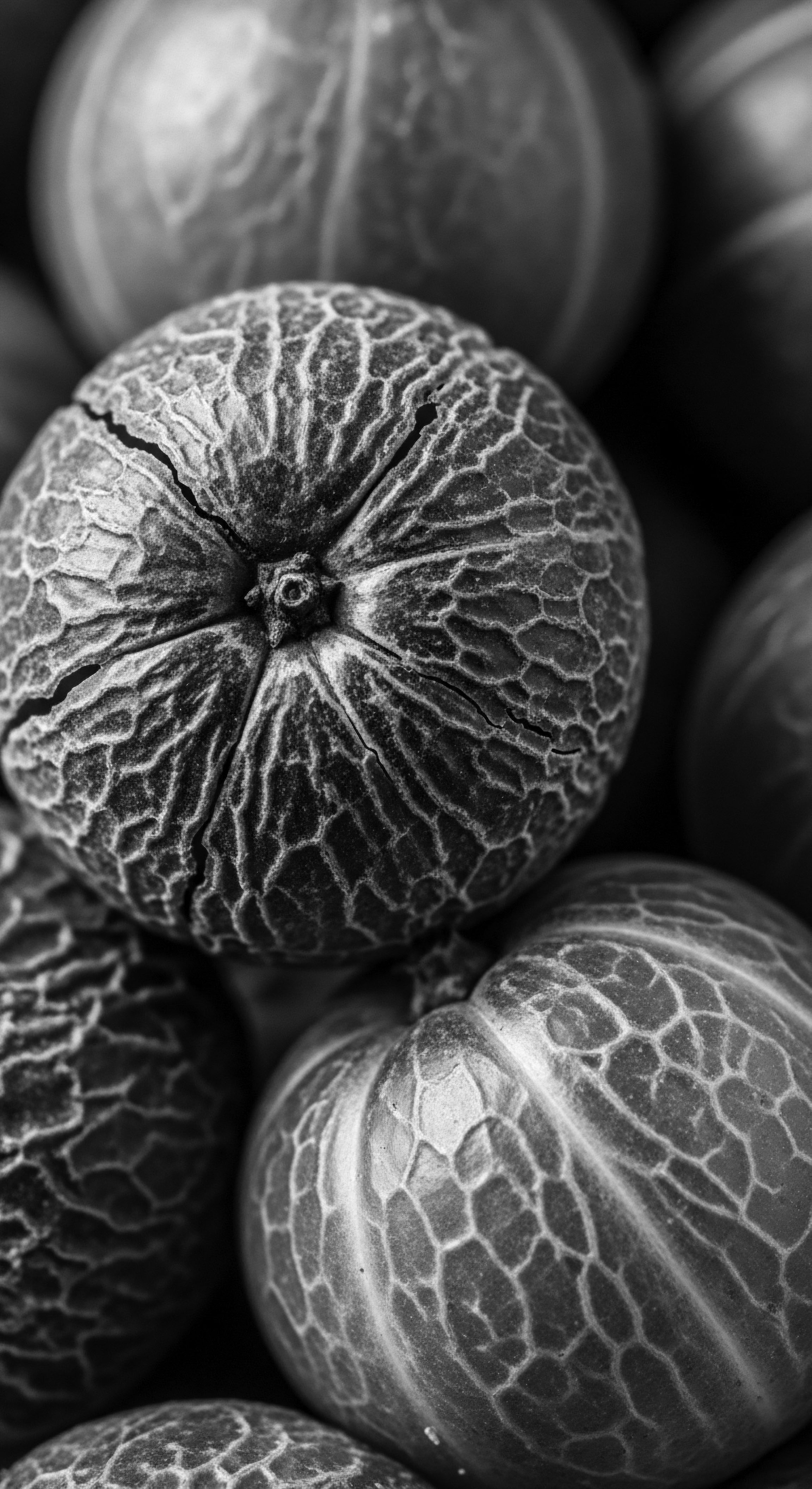
How Do Ancestral Wellness Philosophies Inform Hair Health?
Ancestral wellness philosophies held a comprehensive view of health, where the state of one’s hair was inextricably linked to overall physical and spiritual well-being. The concept of hair as a conduit for spiritual energy, particularly among the Yoruba, meant that its care extended beyond mere cleanliness; it was a sacred duty. An unkempt appearance could signal distress or illness, while healthy, well-maintained hair reflected inner harmony and vitality.
This perspective contrasts sharply with modern, often fragmented, approaches to beauty. Instead, traditional practices were rooted in a holistic understanding of the body and its environment.
This deep connection is evident in the ethnobotanical history of hair care. Across various African communities, indigenous plants and natural compounds were systematically employed for their nourishing, protective, and even medicinal properties. Shea butter, for instance, extracted from the nuts of the shea tree, has been a staple for centuries, recognized for its moisturizing capabilities and its ability to protect hair from harsh climatic conditions. Similarly, the Bassara/Baggara Arab tribe in Chad utilized Chébé powder, derived from the seeds of the Chébé plant, which was traditionally applied as a paste to hair to promote length retention by sealing the hair shaft and cuticle.
These practices were not random experiments but a codified body of knowledge, refined and transmitted through generations, embodying a phytocosmetic tradition that predates contemporary scientific discovery. This ancestral knowledge often focused on preventing damage and maintaining natural moisture balance, reflecting an inherent respect for the hair’s natural state.
A striking example of ancestral resilience and ingenuity through hair care is found within the Mende community of Sierra Leone. In Mende culture, hair held immense social and spiritual importance, and women were expected to possess thick, beautiful hair. Sylvia Ardyn Boone, an anthropologist, documented that well-maintained hair was a highly sought-after quality for both men and women, speaking to vitality and prosperity (Boone, 1986).
The Sande society, a women’s initiation society among the Mende, played a central role in educating girls for their roles as adult women, a process that historically involved lengthy periods of seclusion and instruction under mature women. Part of this instruction undoubtedly included the sophisticated care of hair, linking personal grooming directly to societal integration and the transmission of cultural values.
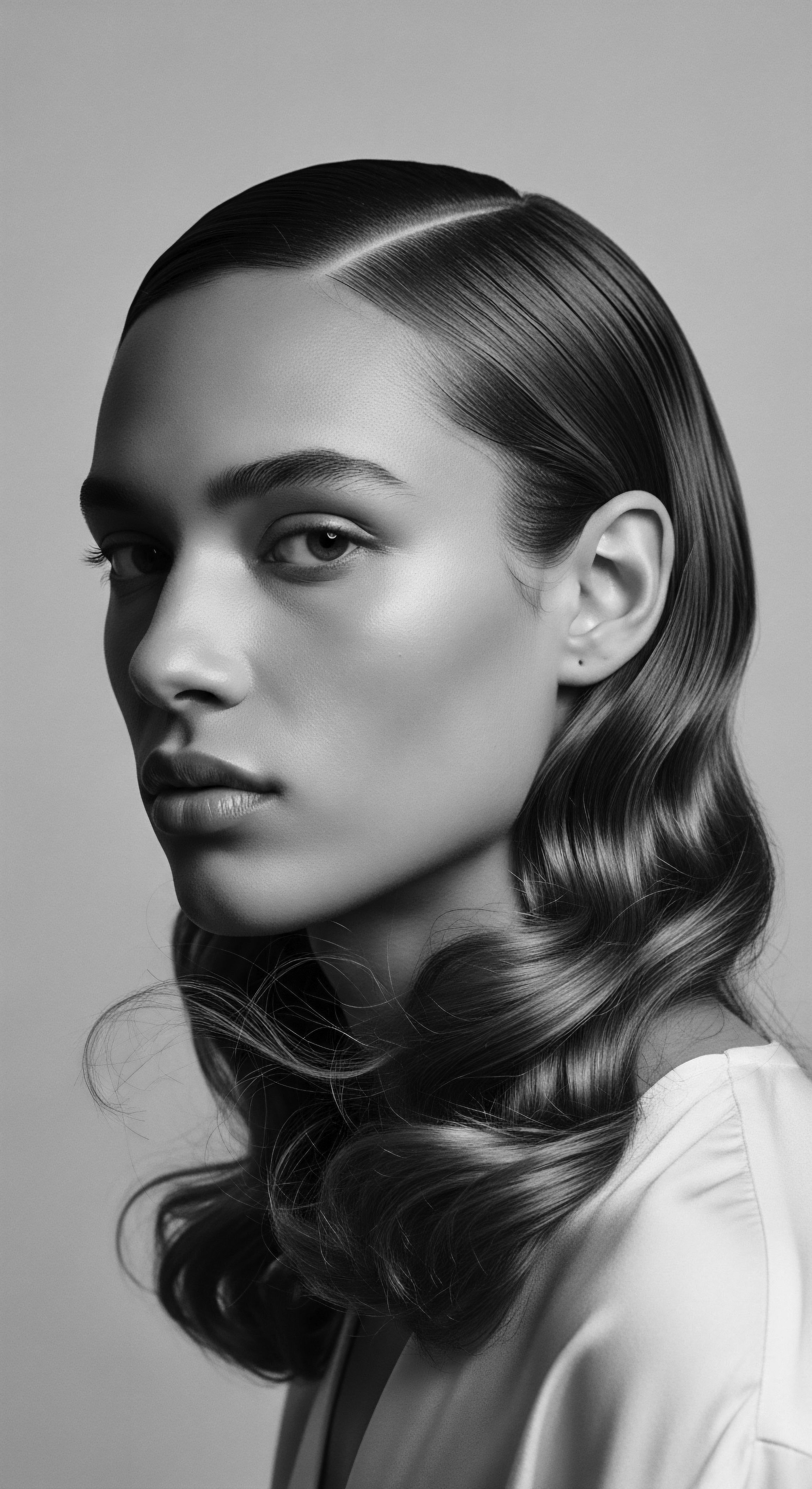
What Nighttime Rituals Carried Ancestral Meaning?
The deliberate practice of protecting hair during sleep carries ancient echoes, particularly within African and diasporic communities. Before the advent of modern bonnets and silk scarves, various methods were employed to safeguard hair from friction, tangling, and moisture loss during rest. These practices were not mere conveniences; they were integral to maintaining the health and integrity of complex hairstyles that often required hours or days to construct. The preservation of these styles was an investment, both in time and in the social statement they made.
Ancestral communities likely employed wraps made from natural fibers or specific ways of coiling and pinning hair to prevent disturbance overnight. The continuity of these practices, evolving into the widespread use of satin and silk bonnets today, speaks to an unbroken line of care rooted in historical necessity and cultural value.
The transition of these rituals across the Middle Passage further underscores their deep significance. Enslaved individuals, stripped of so much, clung to the practices that connected them to their heritage. While resources were scarce, the instinct to protect and maintain hair as a symbol of identity persisted.
The modern bonnet, therefore, is not simply a piece of fabric; it is a direct descendant of ancestral ingenuity, a quiet rebellion against historical attempts to erase cultural markers. This simple garment, used nightly by millions, embodies a continuity of care that links contemporary users to the wisdom of their forebears, a tangible reminder of the resilience embedded in textured hair heritage.
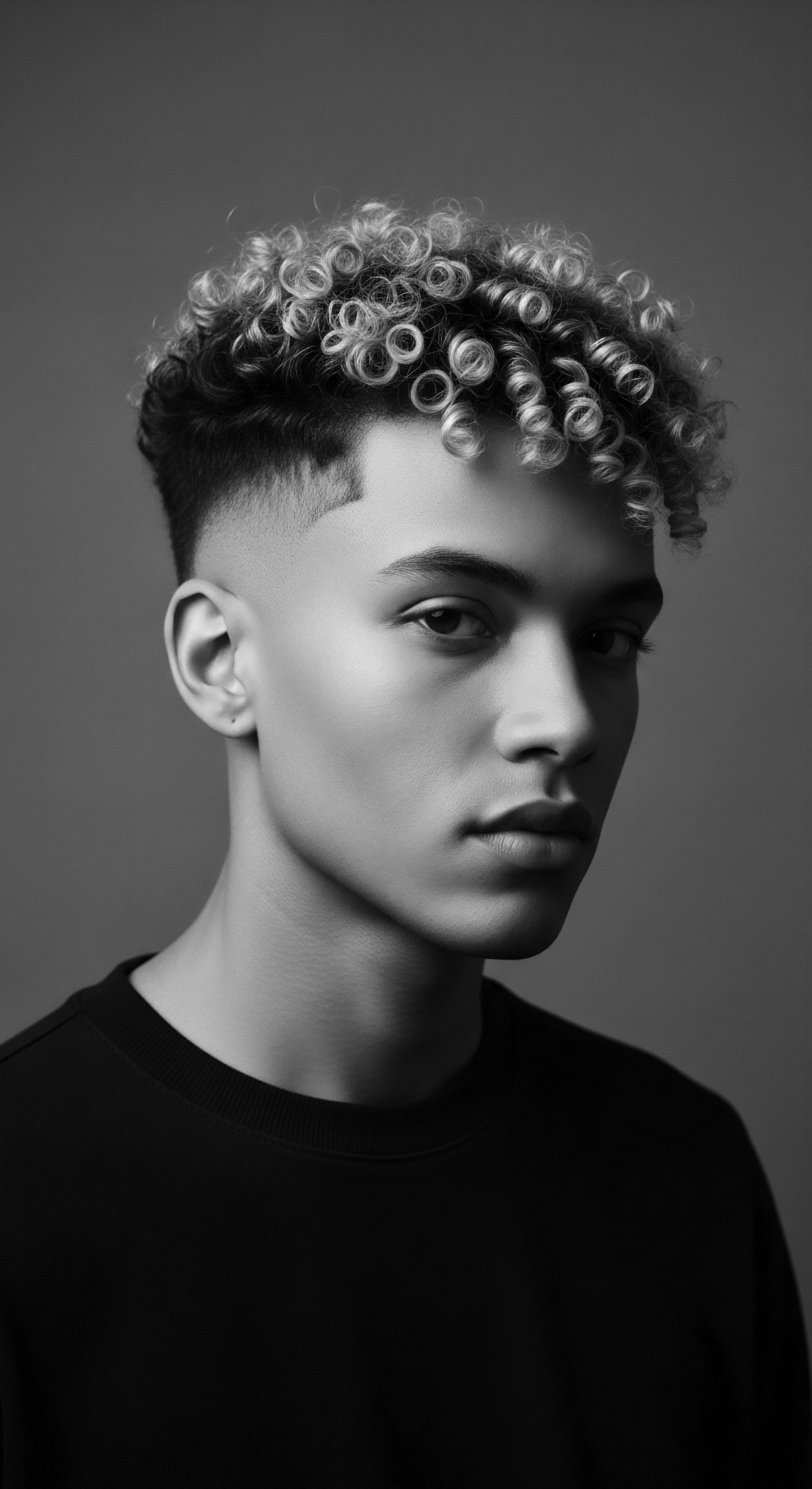
How Did Ancestral Wisdom Guide Hair Problem Solving?
Addressing hair challenges in ancestral times involved a profound reliance on indigenous botanical knowledge and communal wisdom. Problems such as dryness, breakage, or scalp conditions were not isolated medical issues but rather imbalances to be addressed holistically, often through natural remedies passed down orally. The understanding of specific plants for their emollient, antiseptic, or strengthening properties was sophisticated and practical. For example, traditional practitioners in West Africa utilized various plant extracts and oils to combat common hair concerns.
- Aloe Vera ❉ Used for its soothing and moisturizing properties for the scalp and hair, particularly in drier regions.
- Chebe Powder (Chad) ❉ Applied to the hair to reduce breakage and promote length retention, often mixed with oils or butters.
- Shea Butter ❉ A ubiquitous emollient and sealant, protecting hair from the elements and adding moisture.
- Moringa Oil ❉ Prized for its nutritional content, used to strengthen hair and promote scalp health.
These traditional solutions often addressed the root cause of issues, drawing on a deep relationship with the land and its offerings. The process of gathering, preparing, and applying these remedies was itself a communal act, reinforcing social bonds and transmitting cultural heritage alongside practical knowledge. This approach to problem-solving, grounded in nature and shared experience, formed a comprehensive system of hair wellness that continues to inform natural hair care practices today. The wisdom embedded in these ancestral practices provides a powerful counter-narrative to purely chemical or commercial solutions, inviting a return to methods that honor both the hair’s natural biology and its rich cultural history.
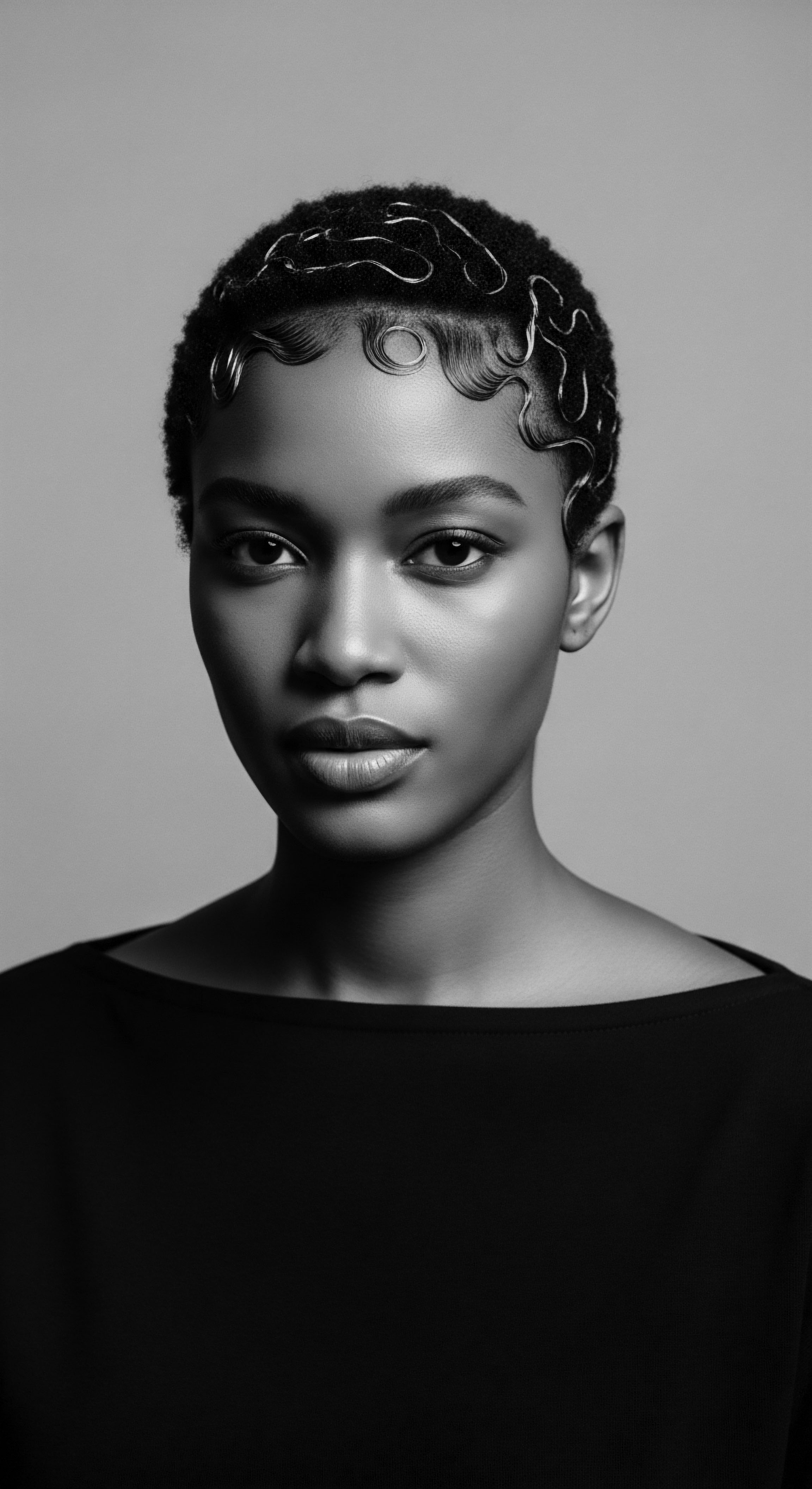
Reflection
To contemplate the historical role of textured hair in ancestral identity is to sit with a living archive, each curl a testament to persistence and profound meaning. The journey of these strands through time offers more than a study of hair; it reveals the deep, unbreakable connection between personal expression and collective heritage. From the ceremonial styling in ancient African kingdoms that delineated status and spiritual ties, to the ingenious acts of resistance performed through cornrows during the transatlantic slave trade, textured hair has consistently served as a powerful symbol. It has been a language of community, a silent act of defiance, and a celebration of self in the face of erasure.
The wisdom of those who came before us, in their understanding of hair’s inherent biology and their cultivation of plant-based care rituals, continues to resonate today, guiding us towards a holistic approach to wellness that transcends the superficial. This enduring legacy, a whispered instruction from the soul of a strand, reminds us that caring for our coils is an act of honoring history, safeguarding identity, and carrying forward a vibrant heritage into futures yet to be shaped.

References
- Boone, S. A. (1986). Radiance from the Waters ❉ Ideals of Feminine Beauty in Mende Art. Yale University Press.
- Byrd, A. D. & Tharps, L. (2001). Hair Story ❉ Untangling the Roots of Black Hair in America. St. Martin’s Press.
- Cole, R. C. (2009). Black Women and Beauty ❉ Reconstructing Identity Through Hair. Palgrave Macmillan.
- Opoku-Agyemang, N. (2007). The Oral Tradition of the Akan ❉ Language, Culture, and History. Nova Science Publishers.
- Sansi, J. (2009). Fetishes and Monuments ❉ Afro-Brazilian Art and Culture in the 21st Century. Berghahn Books.
- Sieber, R. & Herreman, F. (2000). Hair in African Art and Culture. Museum for African Art.
- Thomas, M. (2013). The Hair Scare ❉ A History of Black Hair in America. University of California Press.
- Vogel, A. Mello, M. A. & Sampaio, F. G. (2001). Candomblé ❉ A Religião dos Orixás. Pallas.
- Verger, P. (2002). Notes on the Cult of the Orixas and Voduns. University Press of Florida.
